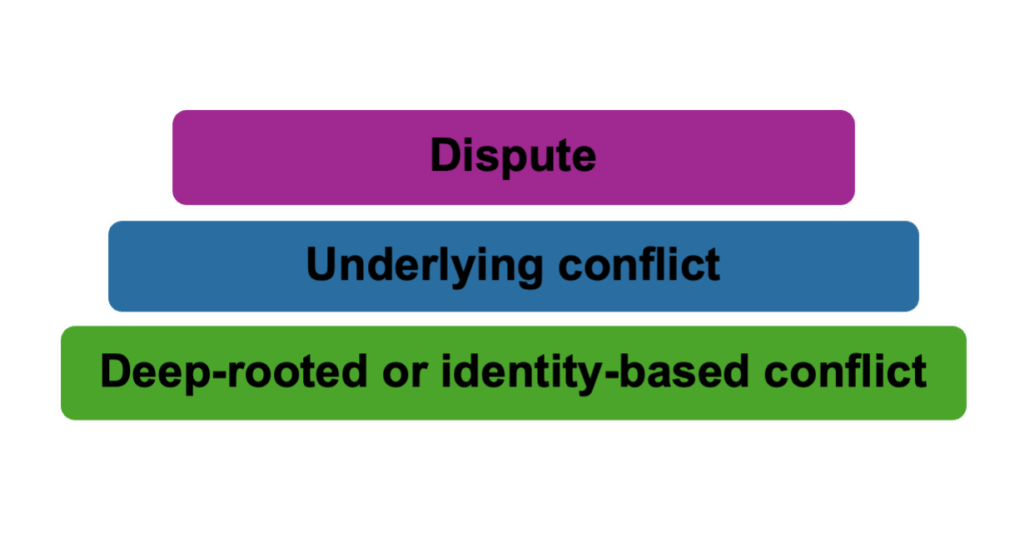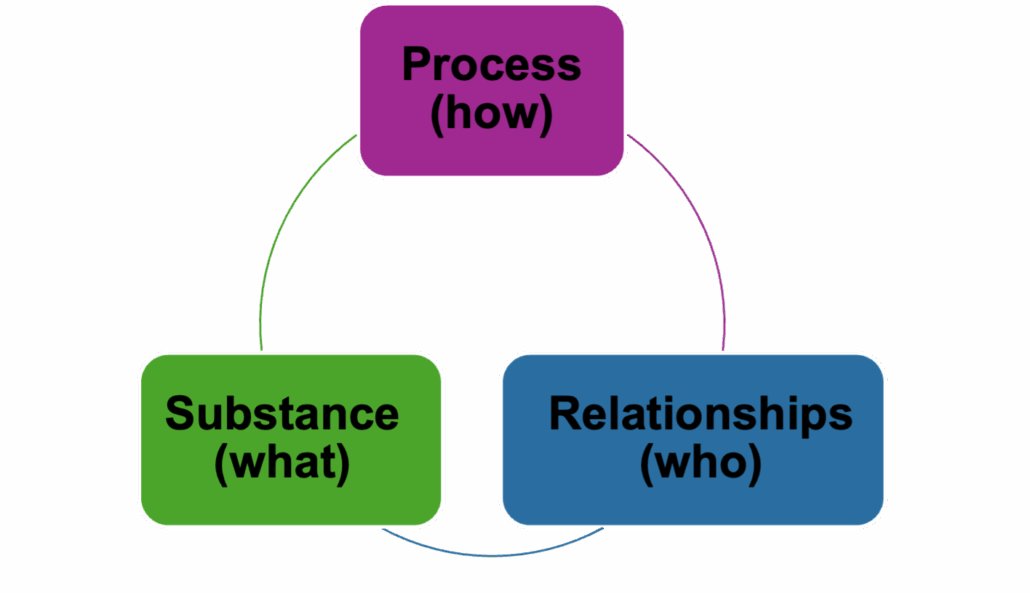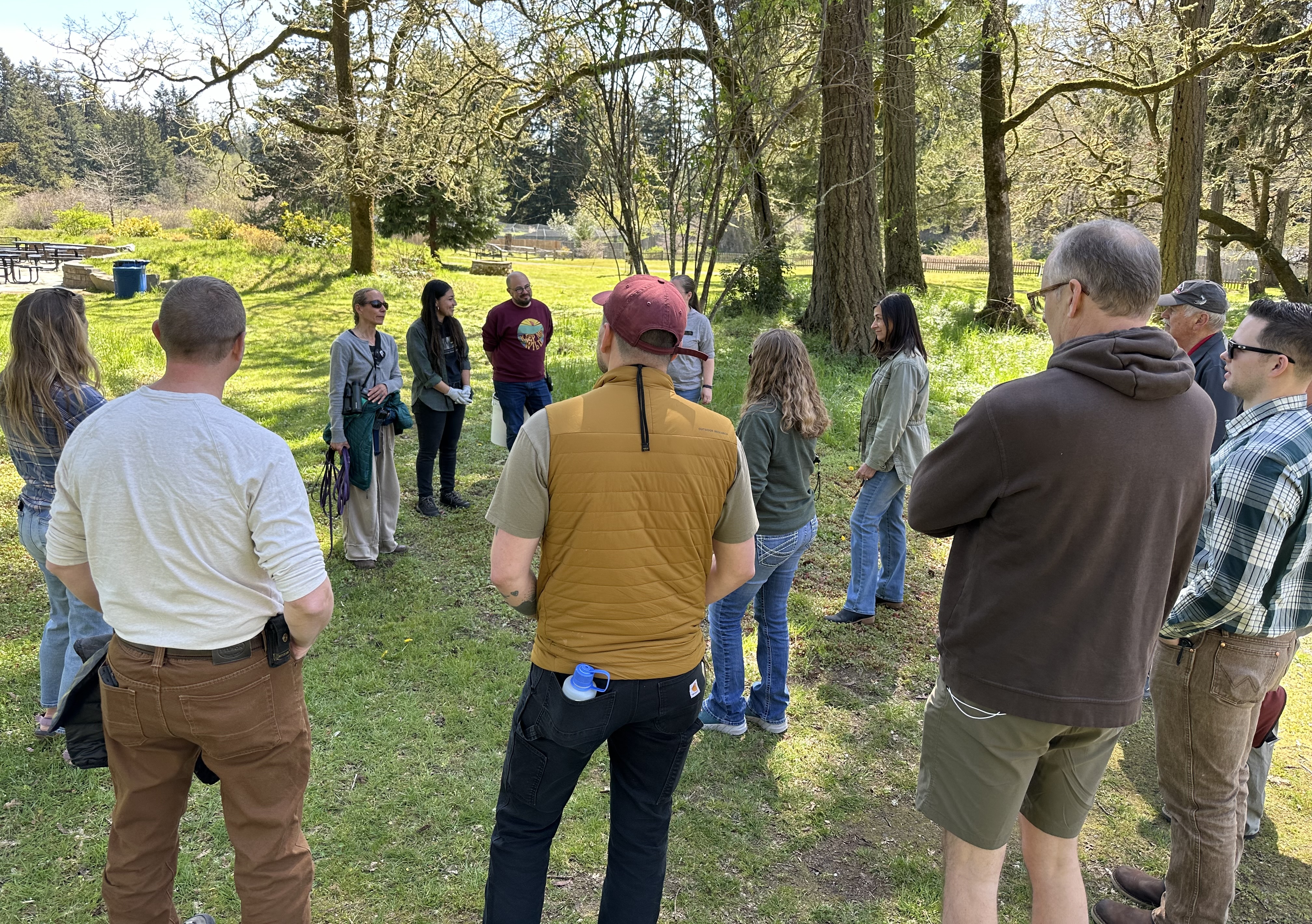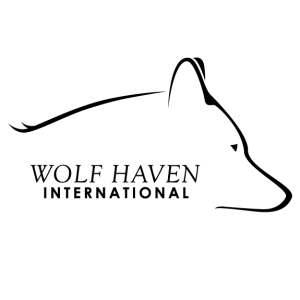Conservation Conflict Transformation
Conservation Conflict Transformation (CCT) is both a philosophy and a practical approach to navigating the complex realities of wildlife and natural resource conservation. Unlike traditional conflict resolution – which often focuses on minimizing tensions and settling immediate disputes – CCT works to address the root causes of conflict.
Most conservation conflicts are fundamentally rooted in social issues. Wildlife and natural resources often become symbols of deeper struggles over recognition, respect, autonomy, identity, and power imbalances. When these underlying layers go unaddressed, destructive patterns of conflict often intensify and repeat.
CCT identifies different levels and dimensions of conflict, which offers a framework to better understand root causes. This is important because each level of conflict must be addressed using a different process and using the wrong process can inflame and perpetuate conflicts.
Levels of conflict

Dimensions of conflict

Dispute – the presenting conflict
Underlying conflict – develops from a history of unresolved disputes and/or past injustices, which give added weight to the presenting dispute and are often used as an opportunity to right past wrongs
Deep-rooted/identity-based conflict – occurs when we attach assumptions, judgements, and/or prejudices to groups (us vs. them)
In many conservation conflicts, the focus tends to be on the issues themselves – the substance – while processes and relationships between stakeholders are often neglected. Too often, stakeholder groups label each other as “partners” even when trust hasn’t yet been built, and deep-seated distrust continues to simmer beneath the surface.
Large meetings are frequently prioritized over relationship-building and often structured in ways that reinforce power imbalances and highlight disparities in decision-making authority. Consequently, emotions fluctuate without yielding tangible progress, leaving participants entrenched in their positions. Trust erodes, frustrations intensify, and conversations spiral, leaving no clear path forward.
To break this cycle, we must start with relationships. CCT’s mantra “go slow to go fast” emphasizes the importance of investing time in building trust-based relationships to guide meaningful change. Relationships formed through dialogue, shared experiences, and collaborative efforts strengthen our capacity for action. They help participants move past an “us vs. them” mindset, fostering a deeper understanding of one another as individuals rather than as adversaries. The strength of these relationships is critical because conservation conflicts are ongoing; once one issue is resolved, another often emerges. Strong relationships provide a foundation for navigating future challenges with greater collaboration and innovation. Building trust doesn’t just make conflict easier to manage, it makes enduring progress possible.
Creating fair and inclusive processes is another critical component of CCT’s approach. Even when groups agree on the merits of a solution, they may still reject it if they feel excluded or overlooked during the process. Marginalization only fuels resentment and perpetuates conflict. Conversely, when people feel heard, respected, and invested in the process, they are far more likely to support the outcomes – even those that don’t fully align with their original positions.


How is CCT relevant to wolf conservation and management?
Conservation conflicts often involve many stakeholders with different and seemingly incompatible goals. For example, efforts to protect predators like wolves can sometimes be at odds with the interests of livestock producers. While wolf advocates often emphasize the ecological importance and intrinsic value of wolves, livestock producers emphasize the financial losses and emotional strain that can result from wolf-livestock interactions. Beyond the direct loss of animals occasionally killed by wolves, producers may also face indirect costs, such as reduced productivity and market value from stress-induced weight loss in their herds. Additional expenses for non-lethal deterrents, such as range riders, fladry, and radio-activated guard boxes, as well as the increased time needed to monitor livestock, further add to their burden. If we do not recognize and address these different perspectives, both humans and animals stand to lose.
The Wolf Advisory Group (WAG), which Wolf Haven has served on since 2013, is guided by the philosophy and practice of CCT and this is reflected in the group’s mission and vision statements.
Why is CCT so challenging?
CCT demands time, patience, adaptability, and a long-term commitment. It also requires a fundamental shift in how we view compromise – not as a sacrifice of values or relinquishment of control, but as a strategic and necessary step toward enduring change. In a society fixated on deliverables and quick wins, embracing a process-oriented approach can feel unfamiliar. Furthermore, CCT proficiency goes beyond theory and subject-matter expertise to include different types of social and emotional intelligence – proficiency requires high levels of self-awareness, humility, and the ability to empathize and patiently engage with people who hold different and/or opposing perspectives. It requires a high capacity to navigate complex social dynamics and the ability to listen deeply. These are not natural skills – they take commitment and discipline.
Ultimately, CCT views conflict as a powerful catalyst for constructive change. By engaging with stakeholders’ values, identities, and perceptions, not just the surface disputes, CCT helps build the strong relationships and collaborative processes essential for sustainable and equitable conservation solutions.
Additional Resources:
Center for Conservation Peacebuilding
Lederach, J. 2003. Little book of conflict transformation: Clear articulation of the guiding principles by a pioneer in the field.
Madden, F. & McQuinn, B. 2014. Conservation’s blind spot: The case for conflict transformation in wildlife conservation. Biological Conservation 178:97-106.
Madden, F. 2015. People and wolves in Washington: Stakeholder conflict assessment and recommendations for conflict transformation. For the Washington Department of Fish and Wildlife.
To get in touch with us about this project, please contact wildlife@wolfhaven.org
